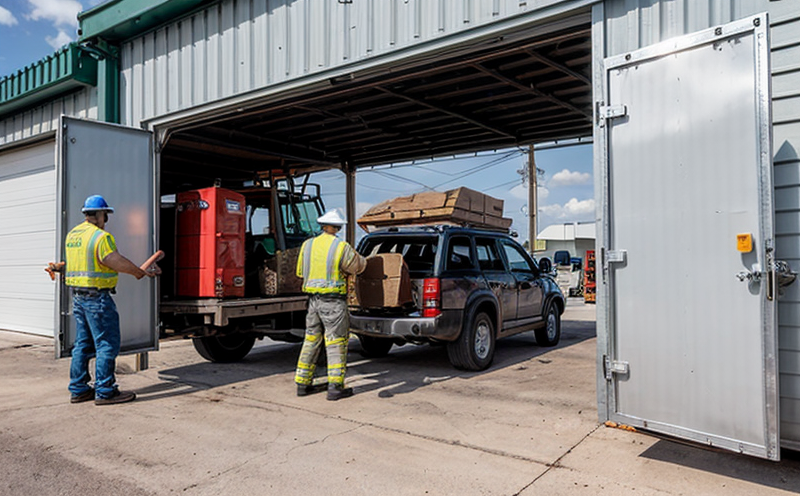Unloading supervision inspection
The unloading supervision inspection is a critical process in ensuring that products delivered to a facility meet the highest standards of quality and compliance. This service involves the meticulous examination and assessment of materials, components, or entire products as they are unloaded from transport vehicles such as trucks, containers, or ships.
In industries like manufacturing, logistics, and supply chain management, unloading supervision is essential for several reasons. It ensures that incoming goods align with predefined quality standards, regulatory requirements, and contractual agreements. This inspection can prevent costly errors, reduce downtime, and maintain brand integrity by ensuring only high-quality products are brought into the facility.
The process typically begins before unloading starts, where the inspector reviews relevant documentation such as bills of lading, packing lists, and quality certificates. These documents provide critical information about the expected contents and any specific handling instructions required during the unloading process. Upon arrival at the designated area, the inspection continues with a visual examination to check for visible signs of damage or discrepancies in quantity.
Depending on the nature of the goods being unloaded, additional checks may be necessary. For instance, in food and beverage manufacturing, inspectors might use sensory testing (sight, smell, taste) to assess freshness and quality. In electronics manufacturing, they would check for physical integrity using non-destructive testing methods like X-ray or magnetic particle inspection.
The unloading supervision service is not limited to just visual inspections; it also includes the use of advanced instrumentation such as moisture meters for perishable goods, ultrasonic thickness gauges for structural components, and more. These tools provide precise measurements that help in identifying any deviations from expected tolerances.
Once the inspection is complete, a detailed report summarizing all observations is generated. This document serves multiple purposes—it informs management about the condition of received materials or products, assists in making informed decisions regarding acceptance or rejection, and acts as evidence for compliance with quality standards and regulations.
The importance of unloading supervision cannot be overstated; it plays a pivotal role in maintaining operational efficiency while ensuring product integrity. By adhering strictly to established protocols and using appropriate technology, organizations can minimize risks associated with substandard products entering their facilities.
Scope and Methodology
The scope of unloading supervision inspection encompasses various aspects aimed at verifying the quality and compliance of incoming materials or products. This includes but is not limited to:
- Visual examination of physical condition
- Inspection of documentation such as bills of lading, packing lists, etc.
- Use of non-destructive testing methods where applicable
- Physical measurements using specialized instruments like moisture meters or ultrasonic gauges
- Generation of comprehensive inspection reports detailing findings and recommendations
The methodology employed during unloading supervision is designed to ensure thoroughness and accuracy. It involves:
- Pre-inspection documentation review
- On-site visual assessment for immediate issues
- Application of appropriate testing techniques based on product type
- Data recording and compilation into a detailed report
- Communication of findings to relevant personnel
This structured approach ensures that all potential problems are identified early, preventing them from impacting further stages within the production or distribution chain.
Why Choose This Test
Selecting unloading supervision inspection is crucial for several reasons:
- Quality Assurance: Ensures that only high-quality products are admitted into your facility, thus maintaining consistent product standards across all stages of production.
- Regulatory Compliance: Helps in adhering to local and international regulations governing the transportation and handling of goods.
- Risk Mitigation: Reduces the risk of accepting faulty or non-compliant materials, thereby protecting your brand reputation.
- Operational Efficiency: By identifying issues promptly at the unloading stage, you can avoid costly delays in processing and storage operations.
- Cost Savings: Prevents unnecessary expenses related to rework, returns, or disposal of unsuitable goods.
In conclusion, choosing unloading supervision inspection is not just about checking physical attributes; it’s about safeguarding the integrity of your supply chain and ensuring that every step in the process contributes positively towards achieving desired outcomes.





